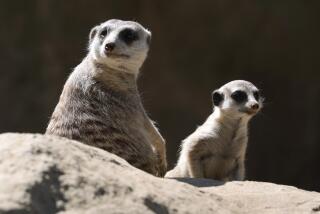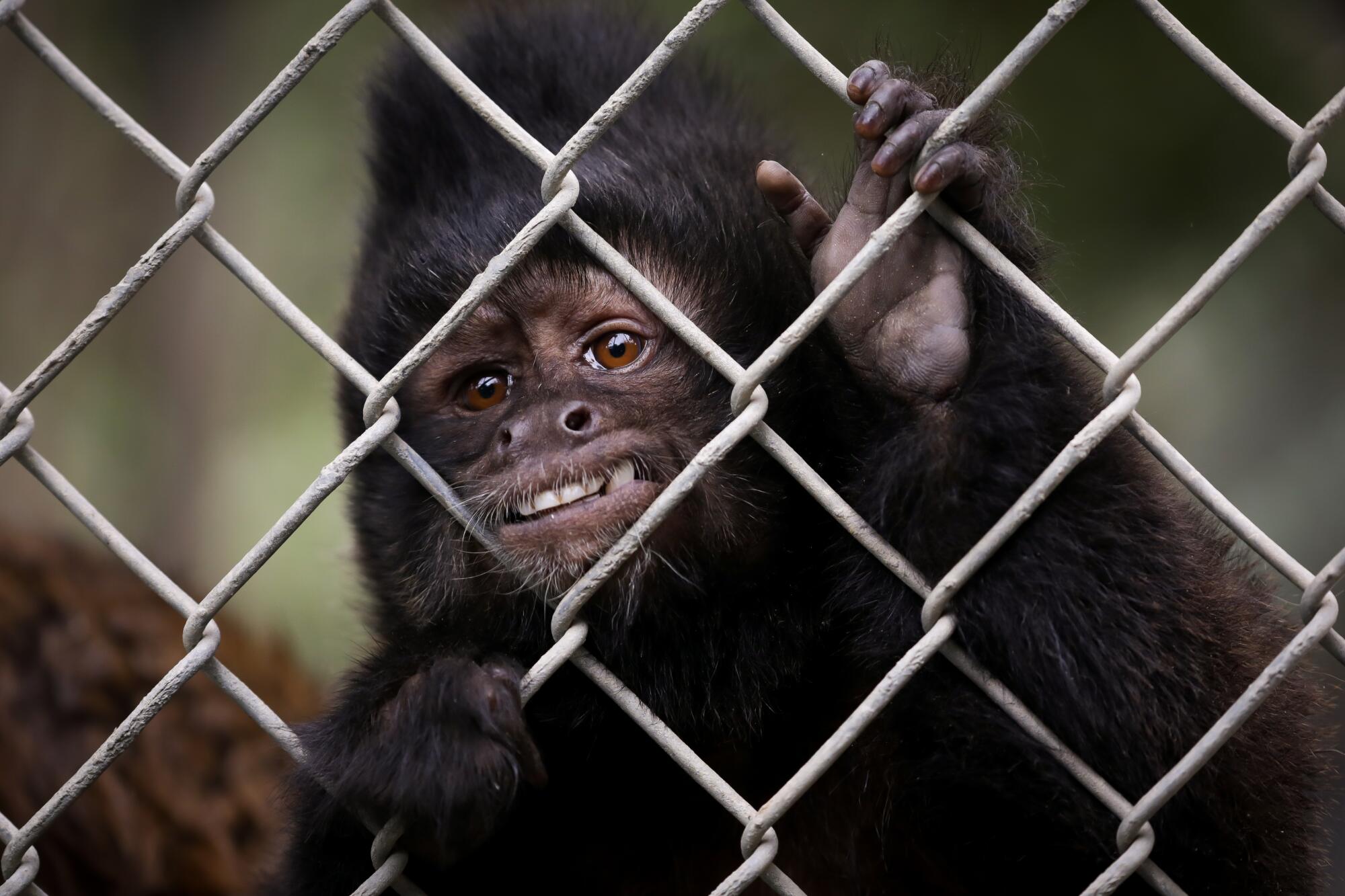
- Share via
At the Santa Ana Zoo’s Monkey Row, a crested capuchin named Mateo rattled his cage, looking for attention.
Nearby, spider monkeys glided through a canopy of ropes, and a black-and-white colobus lazily munched on a lettuce leaf.
Monkeys are this small zoo’s star attraction, featured on its logo and lending their name to its Ferris wheel.
But there are only 28 of them — far below the 50 required by the monkey-loving citrus rancher who donated the 12 acres just south of the 5 Freeway that the zoo has occupied since 1952.
Over the years, heirs of Joseph Prentice, who was nicknamed the “Monkey Man,” have tried to enforce the 50-monkey rule, even threatening to take back the land.
Zoo officials say they are trying their best, but there are only so many monkeys that can be acquired from other zoos.
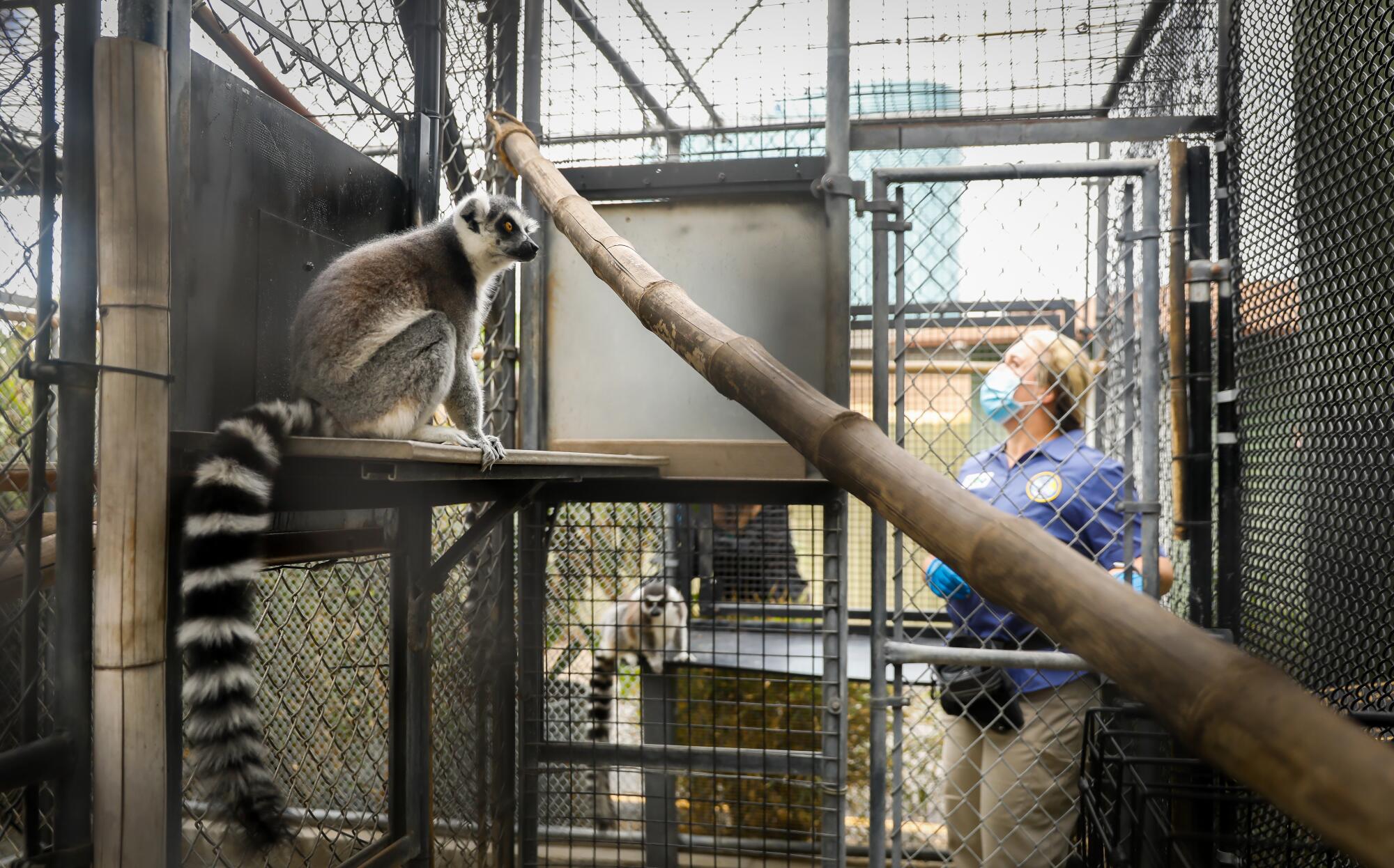
Recently, a new heir — Prentice’s nephew’s son — has taken a gentler tack, saying he believes zoo officials are abiding by the spirit of his great uncle’s wishes.
“They’ve managed it very well up to now,” the heir, Jac Crawford Jr., said of zoo officials. “I certainly wouldn’t want to try to second-guess them.”
Crawford, 76, said his late father, an attorney, helped Prentice with the legal paperwork to create a zoo showcasing monkeys. He believes Prentice and his father came up with the 50-monkey quota after scouting the exhibits at the San Diego Zoo.
Prentice, a lawyer and land baron, lived in a 16-room mansion near what is now the zoo with monkeys and a gibbon, whose mischief caused multiple housekeepers to quit, according to a 2009 Times article.
After hammering out the conditions of the land donation with the city, Prentice died with no children.
In 2008, a great-nephew, Joseph Powell II, informed the city that he had conducted head counts of the monkeys, in several cases finding fewer than 50. “We plan to proceed with our rights under the grant deed to have the property revert back to Mr. Prentice’s heirs,” his lawyer wrote to the city.
That year, several deaths brought the monkey colony down to 48 before a golden lion tamarin gave birth to twins, hitting the magic 50 number.
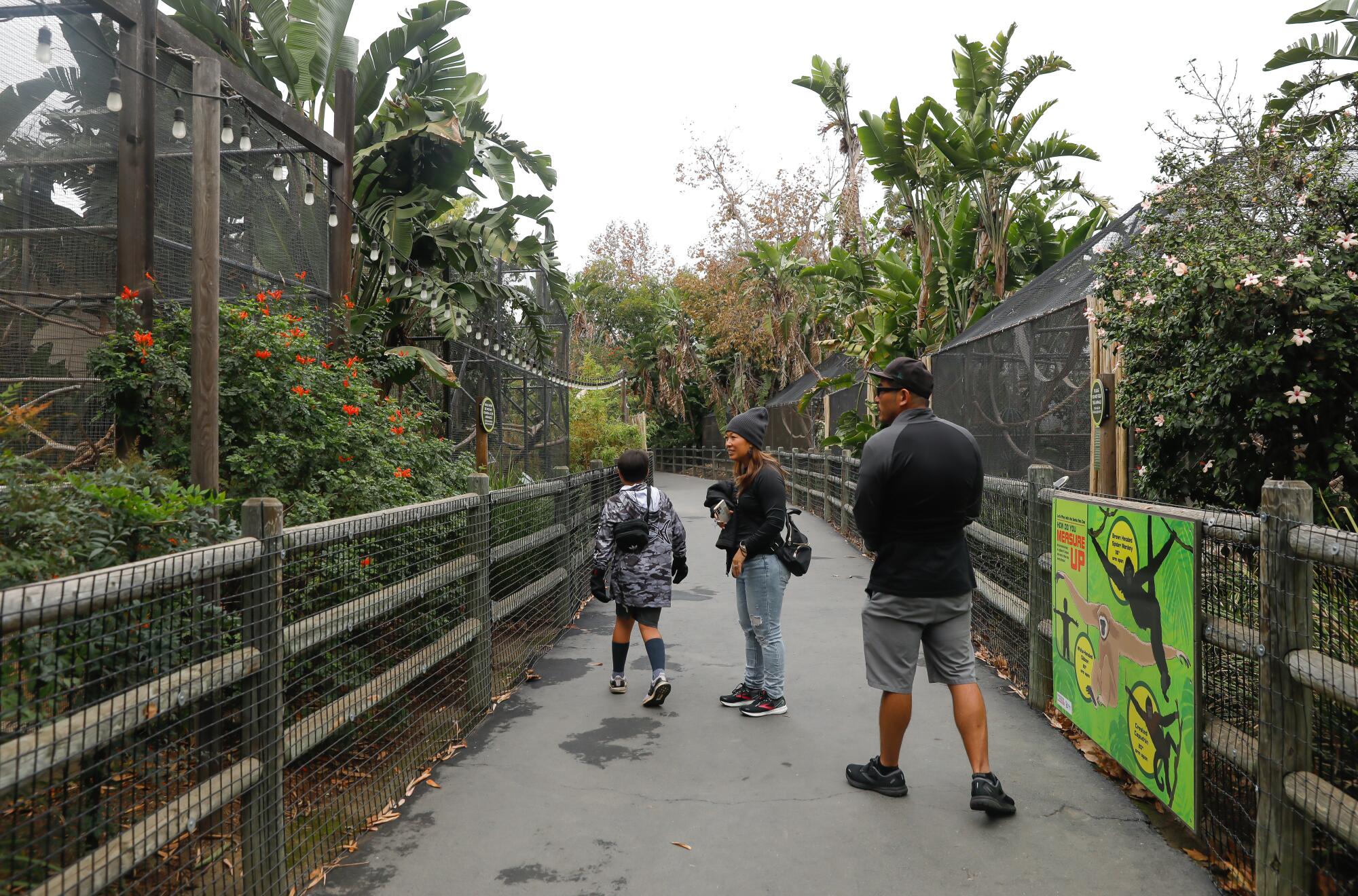
After Powell died in 2015, Erin Hernandez took over the monkey enforcement.
“I was brought up as a kid always being told that my generation was going have to make sure that the city abides by the 50-monkey count,” said Hernandez, 57, of Lake Forest, who is a great-granddaughter of one of Prentice’s sisters.
Earlier this year, she counted just 20 monkeys. In April, she wrote a letter reminding city officials of the agreement with Prentice.
Much has changed since the first shipment of monkeys arrived in Santa Ana from the wild in 1952. Federal laws and international agreements now protect endangered species, which includes many of the zoo’s monkeys, from being further imperiled by an unregulated wildlife trade.
Officials explained to Hernandez that the zoo’s sole source of monkeys is accredited zoos, which have a limited number of animals to lend or donate. Santa Ana’s monkey population has dipped due to some deaths, as well as a slowdown in transferring animals among zoos during the pandemic, they said.
Recently, zoo officials discovered an amended deed from 1954 that designated Crawford’s father as the descendant in charge of enforcing the land donation, making Crawford, not Hernandez, the modern-day heir.
Hernandez said she would like the zoo to stick to the 50-monkey rule. But Crawford, with his more laissez-faire approach, has the legal authority.
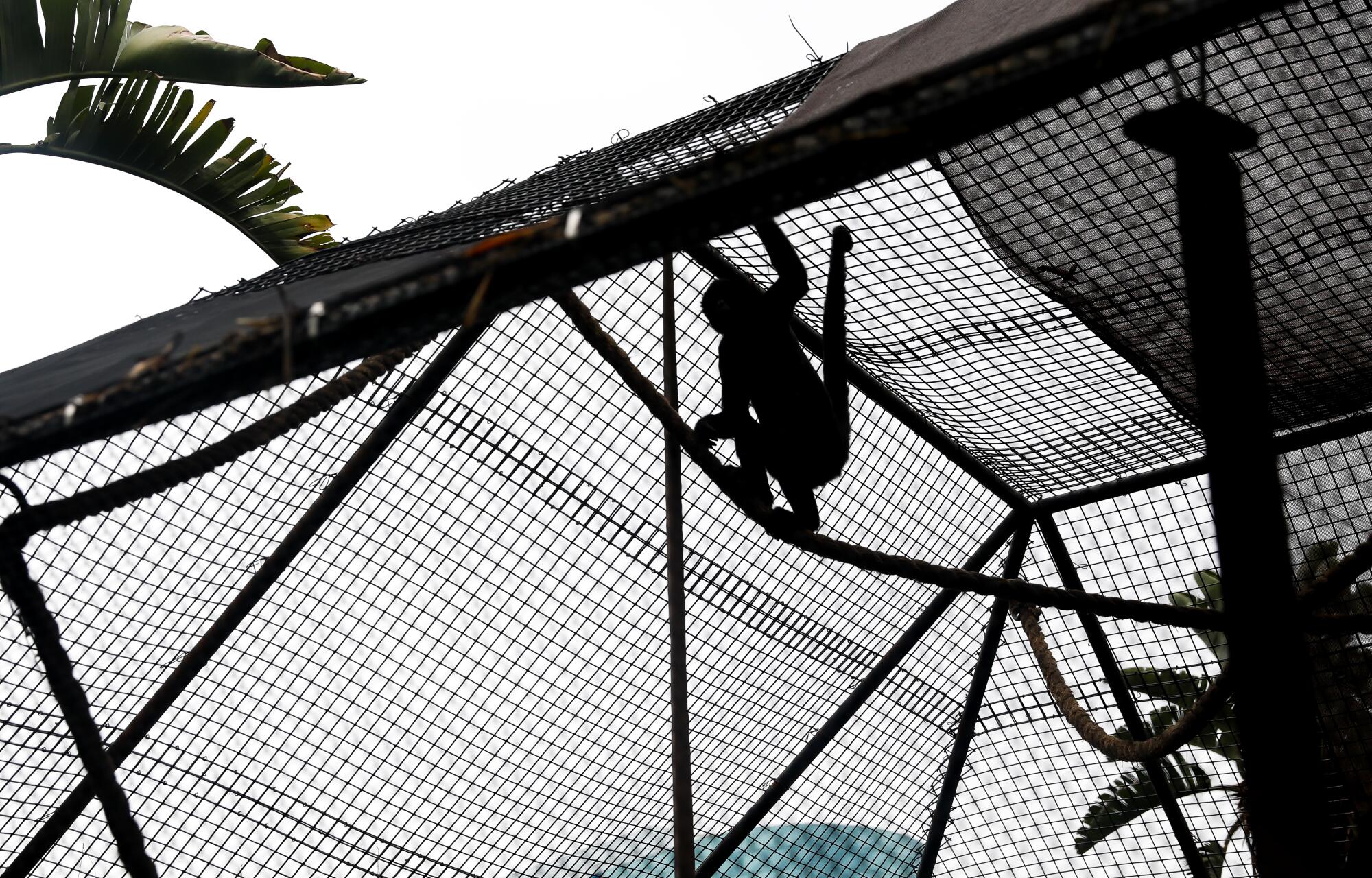
Zoo Director Ethan Fisher remembers coming to the “Monkey Zoo,” whose full name is the Santa Ana Zoo at Prentice Park, as a child.
Fisher, 39, began as a volunteer at the zoo in 1999 before becoming its director five years ago. More important than the exact tally of monkeys is the zoo’s hometown feel, he said.
“The ultimate goal was a zoo for the community,” Fisher said. “In talking to other extended family members, what is here today is more than anyone ever dreamed of.”
Here there are no elephants, tigers or gorillas. The monkeys live alongside ocelots, camels, giant anteaters and armadillos as well as common farm animals like goats and pigs.
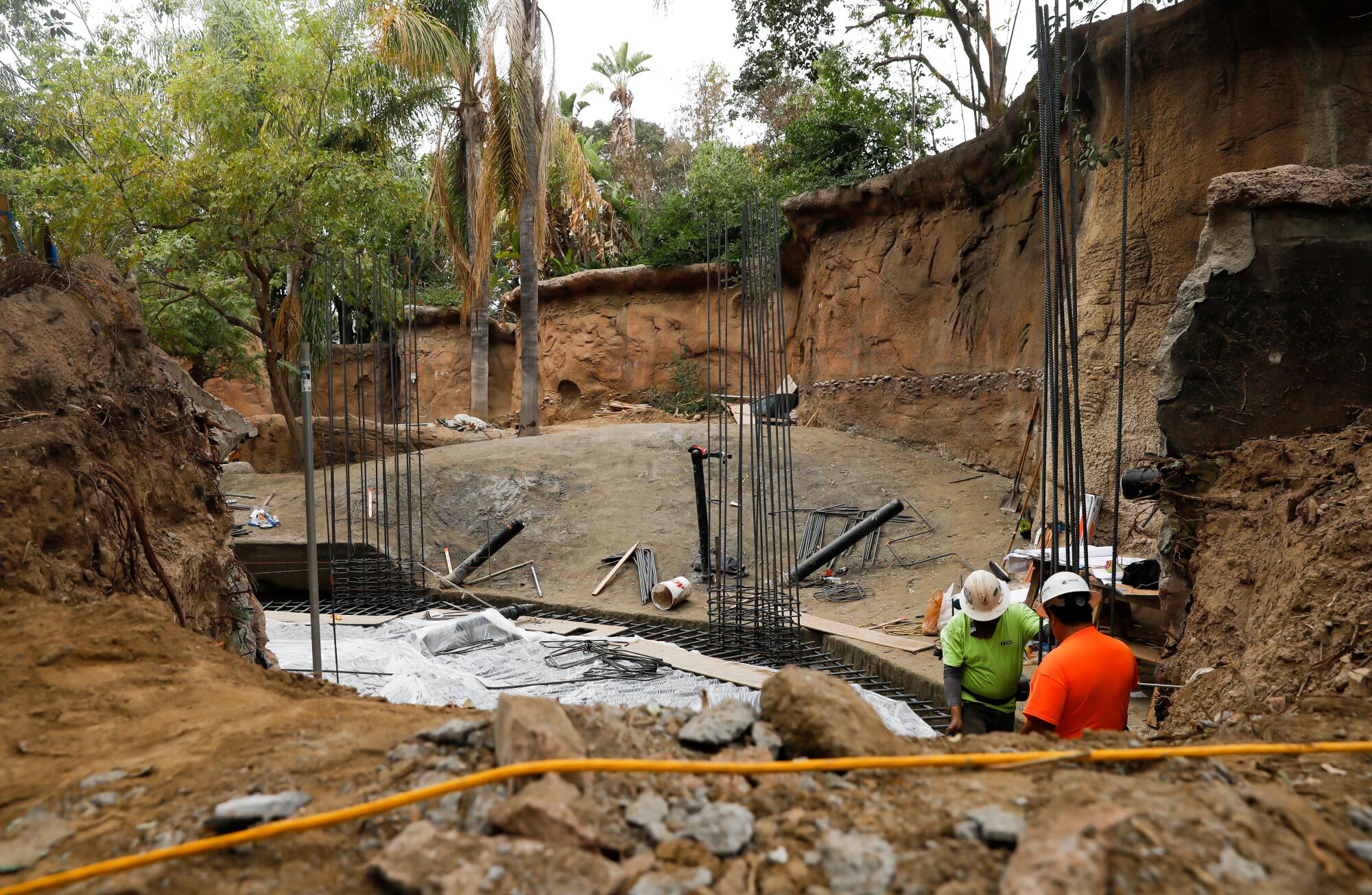
Near the entrance, the 50 Monkeys Ferris Wheel pays homage to Prentice’s vision, with more than a dozen gondolas dedicated to endangered monkey species.
Admission is $12 for adults and $9 for children.
The zoo’s $3.7-million annual budget is dwarfed by the Los Angeles Zoo’s, at $22 million, and the San Diego Zoo’s, at $283 million.
Many of the monkeys are housed in cages little different from those of 70 years ago, when the zoo opened.
That is about to change, as construction crews hammer away at a $6.6-million expansion that will include a 30-foot high monkey habitat with a canopy trail for primates to swing from and get closer to visitors. With another $16 million, Monkey Row will be transformed into Primate Forest.
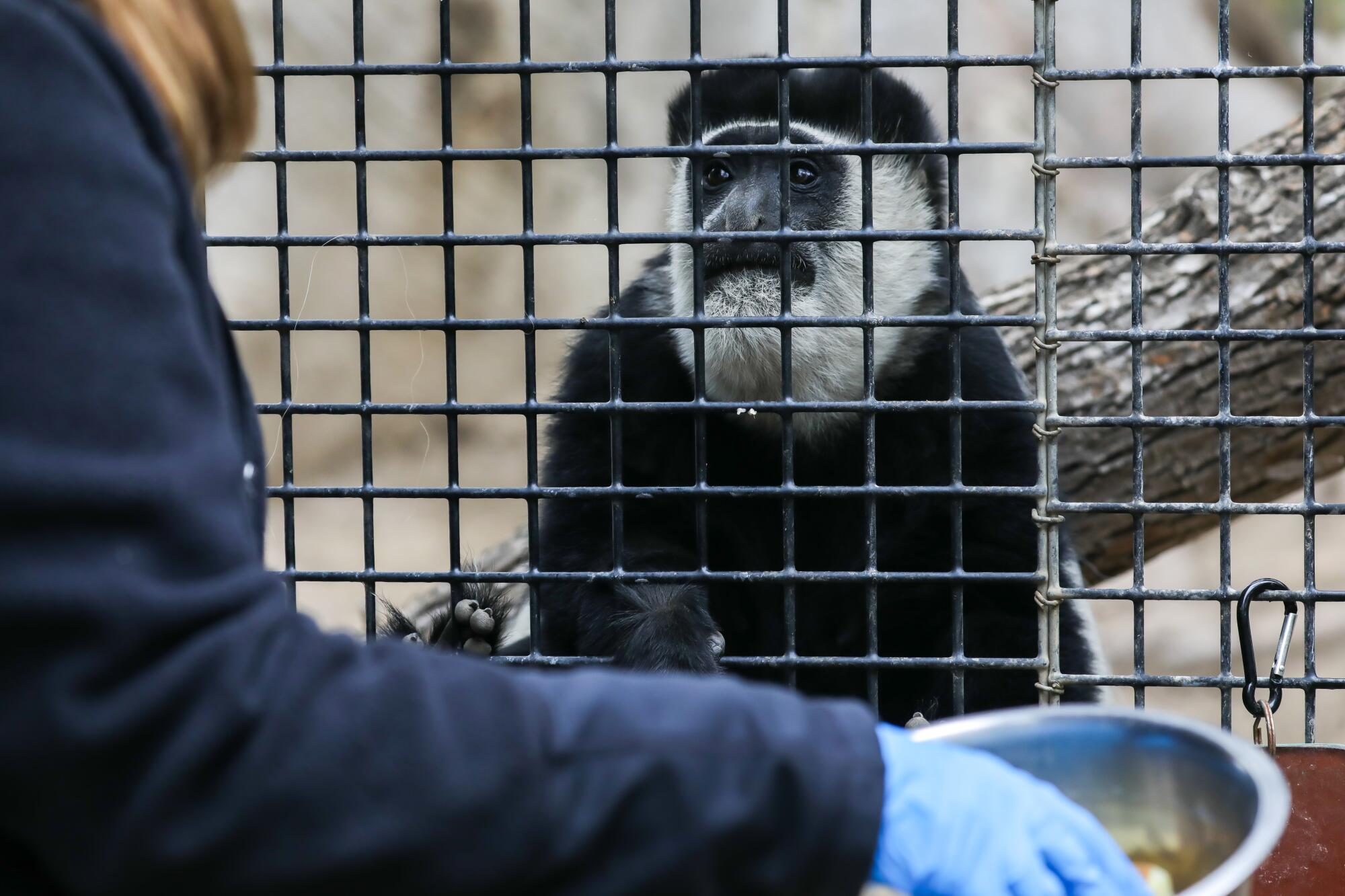
The first expanded monkey habitat is scheduled to open by summer 2023 as part of a $70-million multiyear overhaul — the largest capital project in the zoo’s history— which will be funded through increased revenue, donations and government support.
In 2017, the Assn. of Zoos and Aquariums declined to accredit the Santa Ana Zoo because of its outdated monkey habitats. With the renovations, zoo officials hope to qualify for the accreditation, which would open more opportunities to acquire more monkeys.
“No one is saying that there will never be 50 monkeys at the zoo,” Fisher said. “It’s conceivable that after we go through all this construction and redevelop the zoo, we might end up with more than that.”
More to Read
Sign up for Essential California
The most important California stories and recommendations in your inbox every morning.
You may occasionally receive promotional content from the Los Angeles Times.
